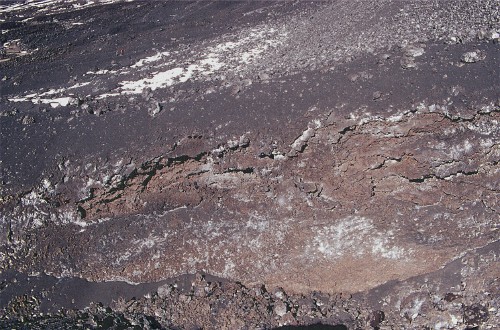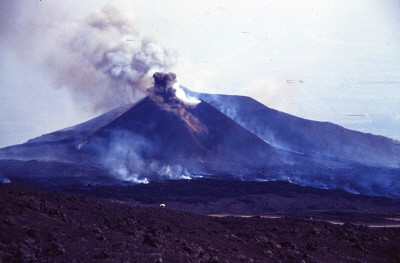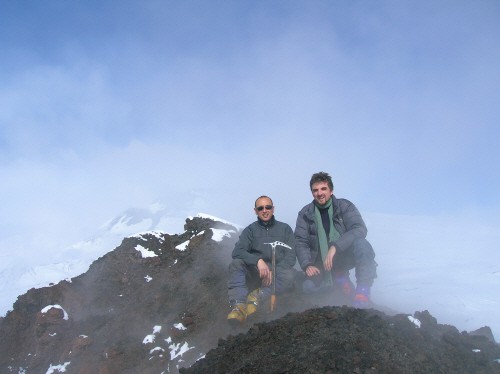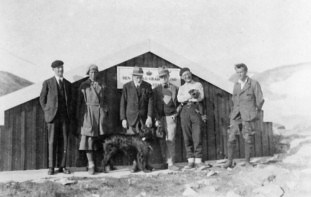Scientists in Italy have found a peculiar lava channel on Mount Etna whose shape cannot be explained by conventional models based on thermal erosion. Carmelo Ferlito and Jens Siewert of the University of Catania say that the volcanic channel might have formed by mechanical erosion effects instead. The results could shed more light on how lava channels form here on Earth and on the Moon and Venus (Phys. Rev. Lett. 96 028501).

Most scientists believe that lava channels in volcanoes are created when hot flowing lava transfers heat to the cold surrounding rock, thus melting and eroding it. However, other researchers have recently found evidence for purely mechanical or frictional effects, in which the lava “cuts” the rock, rather than melting it. Ferlito and Siewert say that the Laghetto channel on Mount Etna, created during the volcano’s eruption in 2001, might have formed by this sort of mechanical process.
The eruption started on 19 July and formed a crater in the Piano del Lago area of the volcano (figure 1). Ferlito and Siewert observed this event from a safe distance and then studied how it evolved over the following weeks. Ferlito discovered the unusual channel when the eruption finished 13 days later and noticed right away that it was not a “classical” channel “built” by the lava, but that it was somehow incised into it. Ferlito took photographs and measurements of the channel banks, which contained clearly visible strata (figure 2).
The two scientists have now put forward a mathematical model to explain the patterns they observed. They believe that the channel was created from a 20-metre thick lava layer containing a dense mixture of crystals and pieces of already solidified lava (or “clasts”) suspended in a melt matrix. The mesh of clasts got dragged along the rock bed so that the irregular clast surfaces ploughed out grooves in it. According to the team, these grooves are characteristic of abrasive and erosion wear processes and are inherently different from what happens in thermal erosion.
Ferlito and Siewert now hope to strengthen their hypothesis by finding and studying other examples of mechanical erosion and will look at older lava flow channels on Mount Etna to do this. Their results could also help shed more light on how lava channels on the Moon and Venus formed. “Until now, erosional features like channels on other planets have been discussed mainly in terms of thermal erosion,” explains Siewert. “Our work adds the idea of other possible processes that may have contributed.”






